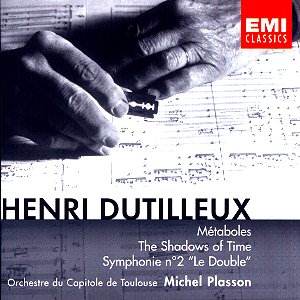 Composer: Dmitri Shostakovich
Composer: Dmitri Shostakovich
Works: Symphony No.1 in F minor (1925); Symphony No.2 “To October” (1927); Symphony No.3 “First of May” (1929); Symphony No.4 in C minor (1935-6); Symphony No.5 in D minor (1937); Symphony No.6 in B minor (1939); Symphony No.7 in C major “Leningrad” (1941); Symphony No.8 in C minor (1943); Symphony No.9 in E flat major (1945); Symphony No.10 in E minor (1953); Symphony No.11 in G minor “The Year 1905” (1957); Symphony No.12 in D minor “The Year 1917” (1961); Symphony No.13 in B flat minor “Babi Yar” (1962); Symphony No.14 (1969); Symphony No.15 in A major (1971)
Performers: WDR Symphony Orchestra, Cologne; WDR Radio Chorus; Choral Academy Moscow; Sergei Aleksashkin (bass); Alla Simoni (soprano); Vladimir Vaneev (bass)
Recording: Various dates, 1992-2000, Philharmonie, Cologne
Label: BRILLIANT CLASSICS
Dmitri Shostakovich’s symphonies represent a profound narrative of personal and societal upheaval, reflecting the tumultuous history of Soviet Russia. This comprehensive cycle, conducted by Rudolf Barshai, spans the composer’s evolution from the youthful exuberance of his First Symphony through to the introspective depth of his later works. The collection serves not only as a testament to Shostakovich’s genius but also as a revealing portrait of the cultural and political landscape of his time.
Barshai’s interpretations offer a curious blend of restraint and emotional urgency. His approach to the First Symphony, with its jubilant yet ironic themes, captures the youthful exuberance and sophistication in orchestration that characterizes this early work. The crispness of the strings and the buoyant rhythms are adeptly balanced by Barshai, who allows the playful motifs to emerge with clarity, illuminating the intricate counterpoint. The recording quality, engineered to preserve the spaciousness of the Philharmonie, enhances the clarity of texture while retaining a warmth that envelops the listener.
As we progress through the cycle, Barshai’s readings reveal a nuanced understanding of Shostakovich’s shifting tonal landscapes. The Seventh Symphony, particularly in its first movement, embodies the tension between bombastic nationalism and somber introspection. Barshai’s pacing allows the ominous themes to resonate without overwhelming the listener, creating a palpable sense of dread that crescendos into the notorious “invasion theme.” This interpretation stands in stark contrast to more aggressive readings, such as those by Mravinsky, yet it invites a thoughtful contemplation of the music’s emotional undercurrents.
The Fourth Symphony, recorded in 1996, stands as a monumental achievement within this collection. Here, Barshai commands the orchestra with a masterful sense of dynamics, building to colossal climaxes that are both shattering and cathartic. The stark contrasts between the frenetic outer movements and the hauntingly beautiful Adagio are expertly navigated, showcasing Barshai’s ability to extract both power and delicacy from the orchestral fabric. The engineering captures this dichotomy effectively, allowing the listener to experience the full range of Shostakovich’s emotional palette.
Barshai’s interpretive choices shine particularly in the more contentious works, such as the Tenth Symphony, which reflects the profound psychological scars left by Stalin’s regime. His reading of the second movement, with its grotesque caricature of bureaucratic banality, is chillingly effective, underscoring the macabre humor that often permeates Shostakovich’s music. The clarity of the recording allows the intricate woodwind lines to pierce through the dense orchestral texture, revealing layers of irony and despair.
While the set is not devoid of imperfections—some slow movements may lack the tension that characterizes the best interpretations—Barshai’s command over the ensemble and his clear vision for each work create a compelling narrative arc. The documentation accompanying the set, particularly David Doughty’s insightful essays, enriches the listening experience, providing context and analysis that deepen one’s appreciation of the music.
Barshai’s substantial experience with Shostakovich’s oeuvre lends a unique depth to these performances. His role as a contemporary and friend of the composer infuses his interpretations with an authenticity that is both rare and valuable. Although there are moments where one might yearn for the raw intensity brought forth by conductors like Bernstein or Mravinsky, Barshai’s refined approach offers a fresh perspective that merits consideration.
This collection stands as a significant contribution to Shostakovich’s discography. It encapsulates the breadth of his symphonic output with an interpretative honesty that respects the score while revealing the inherent drama of the music. For those seeking a comprehensive understanding of Shostakovich’s symphonic evolution, Barshai’s cycle is an invaluable resource, offering both scholarly insight and musical gratification.



